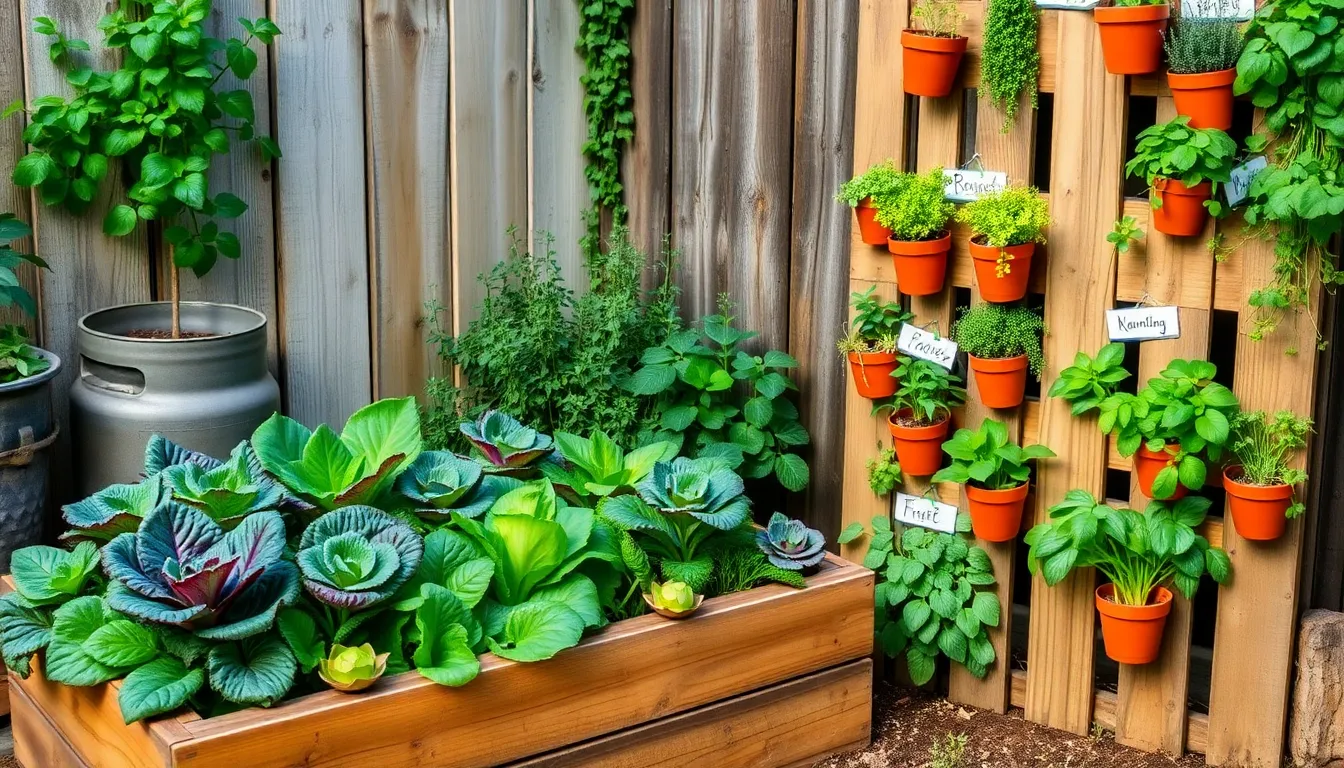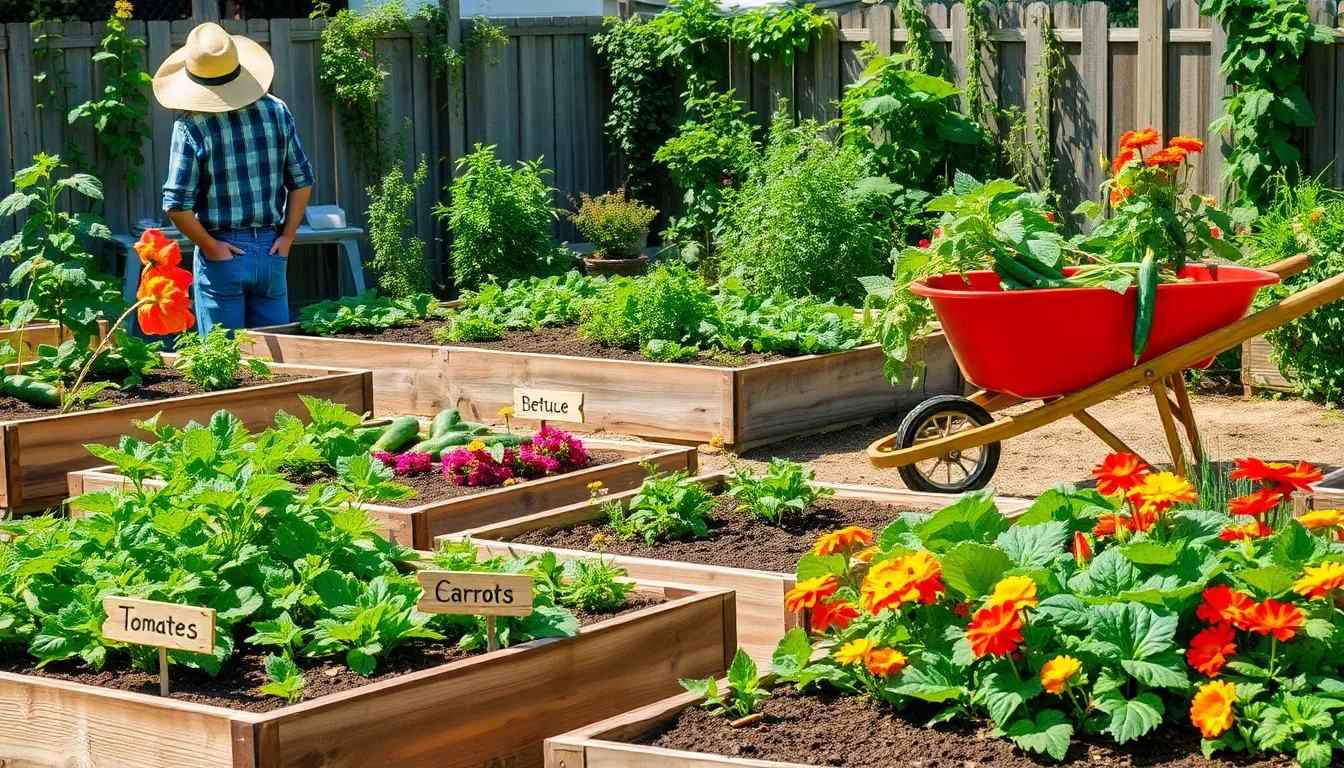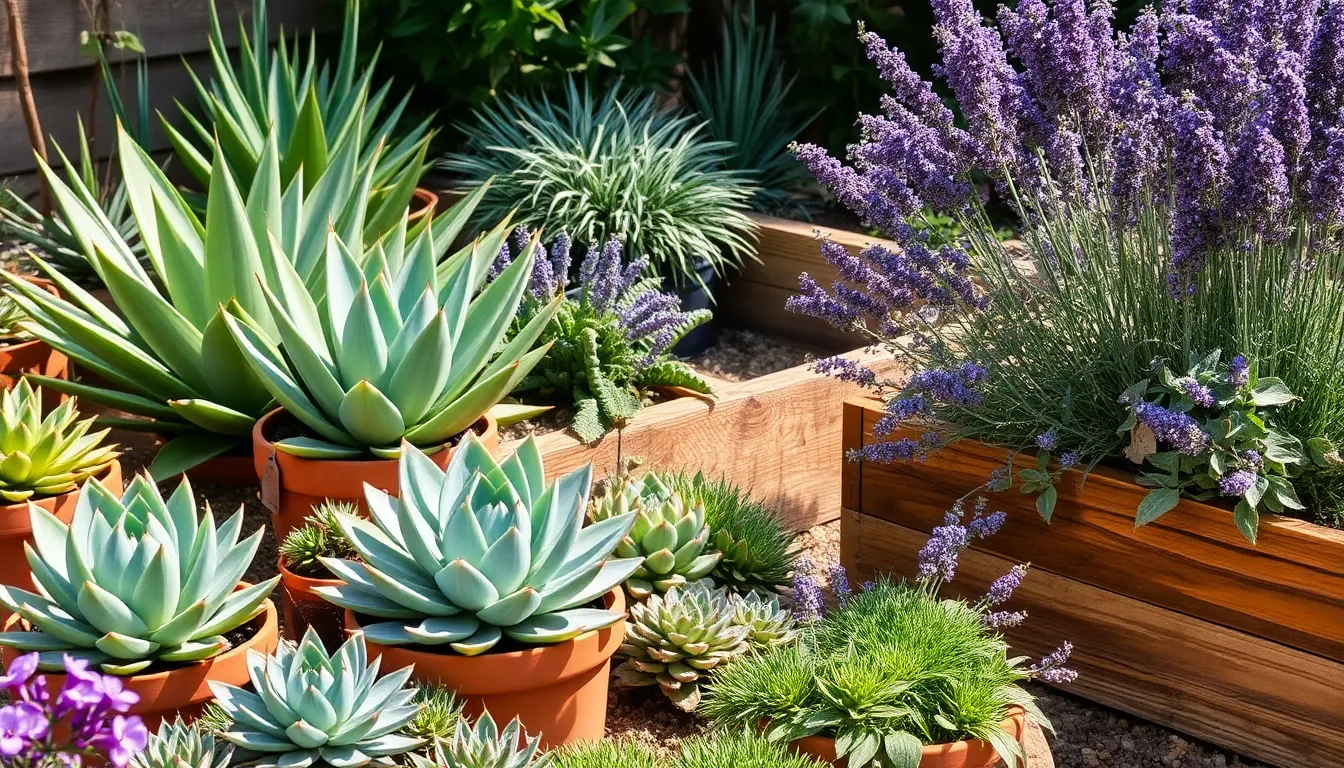Welcome to the vibrant world of organic gardening, where every seed sown is a step toward a healthier and more sustainable lifestyle. Whether you’re just starting out with your first patch of soil or you’re a seasoned gardener with calloused hands and a heart full of green dreams, “14 Organic Gardening Tips” is your trusty companion on this rewarding journey.
This guide is a treasure trove of wisdom, meticulously curated to enhance your gardening experience and help you cultivate a flourishing, chemical-free oasis. With practical insights and time-tested techniques, you’ll discover how to nurture your plants naturally, boosting their growth and your harvests, while savoring the simple joys of gardening. Embrace the confidence that comes with knowing you have the tools to succeed, and let the beauty of your thriving garden bring you endless delight.
Choose Organic Seeds or Plants
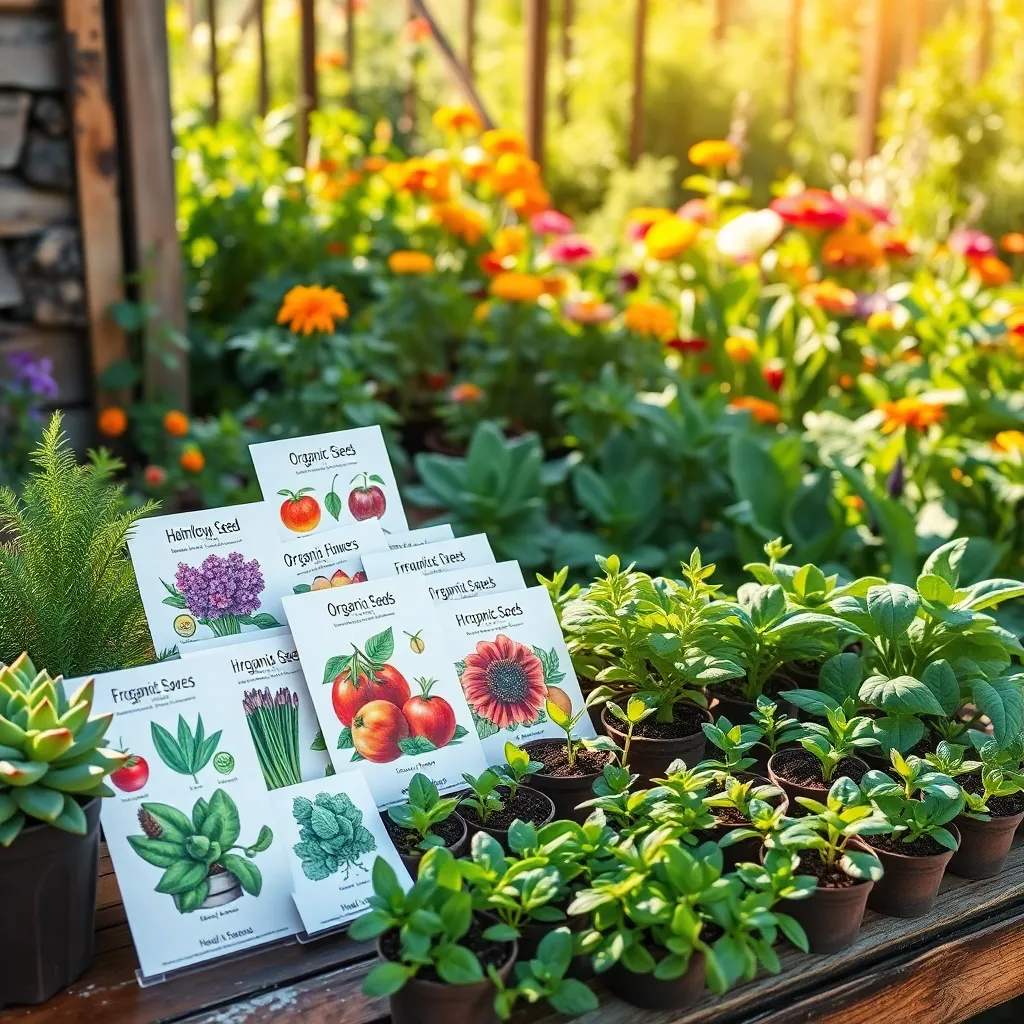
Opting for organic seeds or plants is a foundational step towards a thriving organic garden. These seeds and plants are grown without synthetic fertilizers or pesticides, ensuring a healthier start for your garden.
When choosing seeds, look for those labeled as certified organic to ensure they meet organic standards. These seeds are often more resilient to pests and diseases, reducing the need for chemical interventions.
Organic seeds and plants often have a higher germination rate and are specifically bred for natural growing conditions. This adaptability can lead to more robust plants that flourish with less intervention.
To maximize success, plant your organic seeds in well-draining soil enriched with organic compost. Regular watering is essential, but be sure to keep the soil consistently moist without overwatering, as this can lead to root rot.
Enrich Soil with Compost Regularly
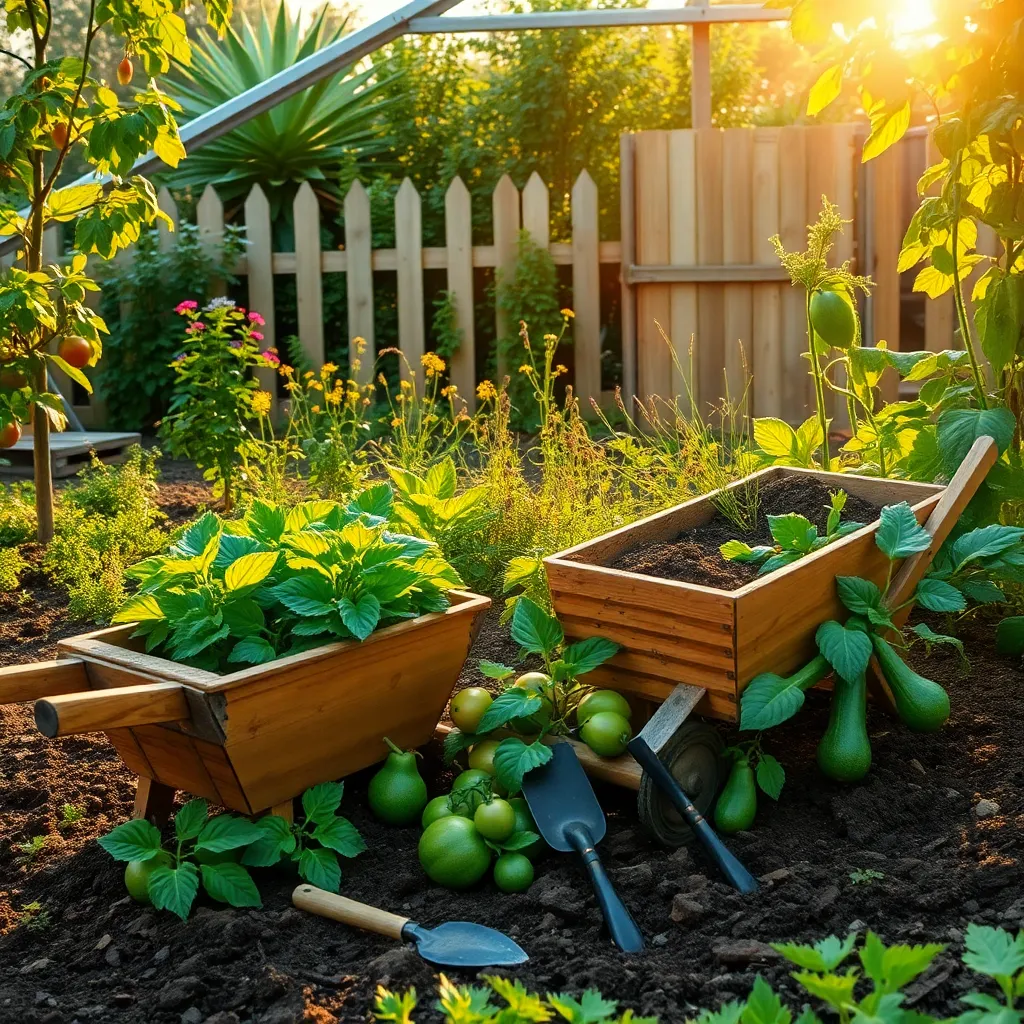
Composting is an excellent way to enrich your soil and contribute to a sustainable garden. By regularly adding compost, you’re providing a steady stream of nutrients that improve soil structure and promote healthy plant growth.
Start your compost pile with a mix of green materials like vegetable scraps and brown materials such as dried leaves. Turn the pile every few weeks to aerate it, helping to speed up the decomposition process and produce nutrient-rich compost.
Applying compost to your garden is simple: spread a layer about 2-3 inches thick over your garden beds and gently work it into the topsoil. This practice not only enriches the soil but also enhances its ability to retain moisture, reducing the need for frequent watering.
For those with limited space, consider a compost tumbler or vermicomposting with worms, which is an efficient way to produce compost in smaller areas. Advanced gardeners can explore compost teas, which are liquid solutions made from steeped compost and used as a nutrient-rich foliar spray.
Rotate Crops to Prevent Pests
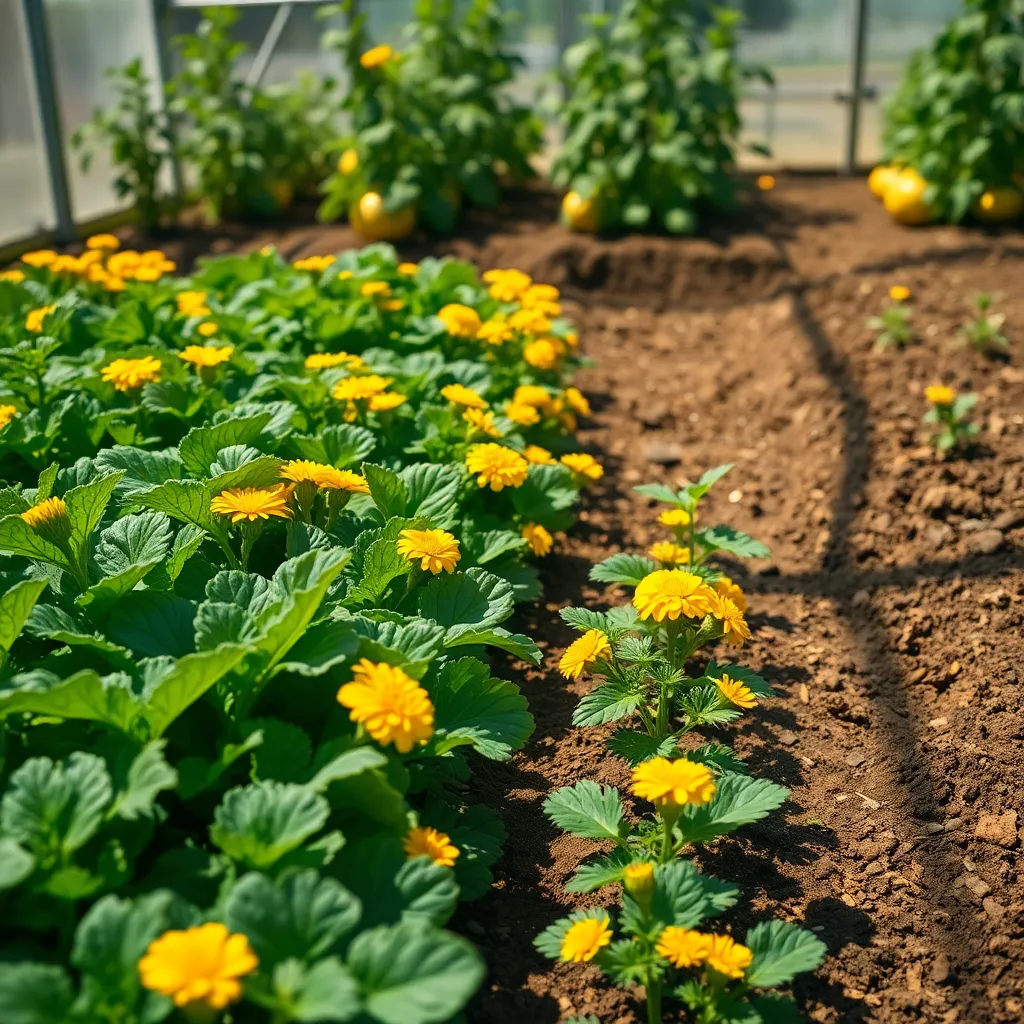
Rotating crops is a fundamental organic gardening technique that helps prevent pest infestations. By changing the location of plant families each year, you disrupt the life cycles of pests that thrive on specific crops.
This practice can be particularly effective for vegetables like tomatoes and cucumbers, which are prone to pest issues. For instance, avoid planting tomatoes in the same spot for at least three years to minimize the risk of soil-borne diseases and pests like nematodes.
Implementing a simple crop rotation plan involves grouping plants by family and planning a three- to four-year rotation schedule. Common plant families include the nightshades (tomatoes, peppers, eggplants), brassicas (cabbage, broccoli, kale), and legumes (beans, peas).
Advanced gardeners can enhance their rotation strategy by incorporating cover crops and green manures to further enrich the soil. Cover crops such as clover or vetch can add nitrogen to the soil, benefiting the subsequent planting season.
Utilize Mulch for Weed Control
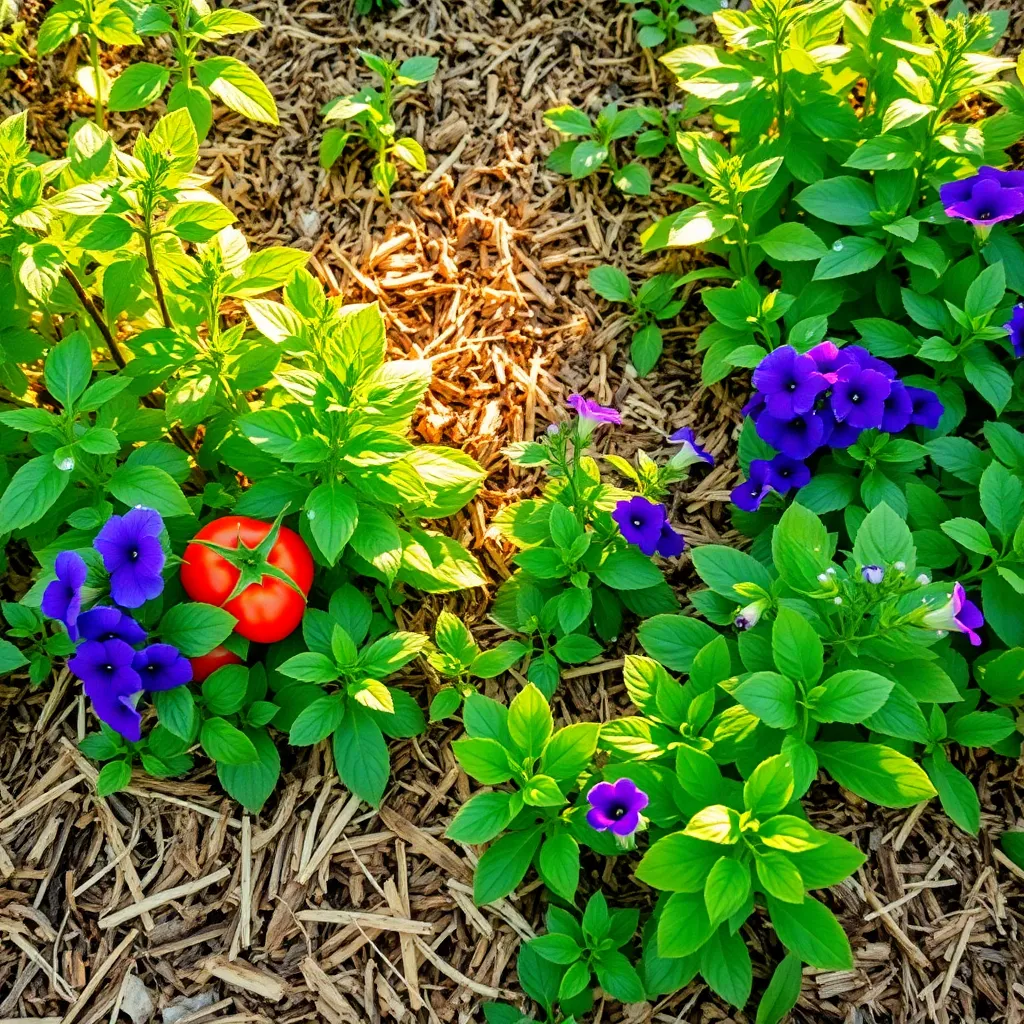
Mulch is a powerful tool in the gardener’s arsenal for controlling weeds effectively and sustainably. By applying a 2 to 3-inch layer of organic mulch around your plants, you can significantly reduce the growth of unwanted weeds while conserving soil moisture.
For beginners, materials like shredded leaves, grass clippings, or bark chips are excellent choices for mulch. These organic options not only suppress weeds but also enrich the soil as they decompose, providing essential nutrients for your plants.
Experienced gardeners might consider using straw or wood chips as mulch to achieve a more tailored approach to weed control. Ensure that the mulch is kept away from the base of plants to prevent rot and allow for proper airflow, which is critical for plant health.
Mulching can also help maintain consistent soil temperatures, protecting plant roots from extreme weather conditions. This is especially beneficial during the hot summer months or in areas prone to temperature fluctuations.
Practice Companion Planting Techniques
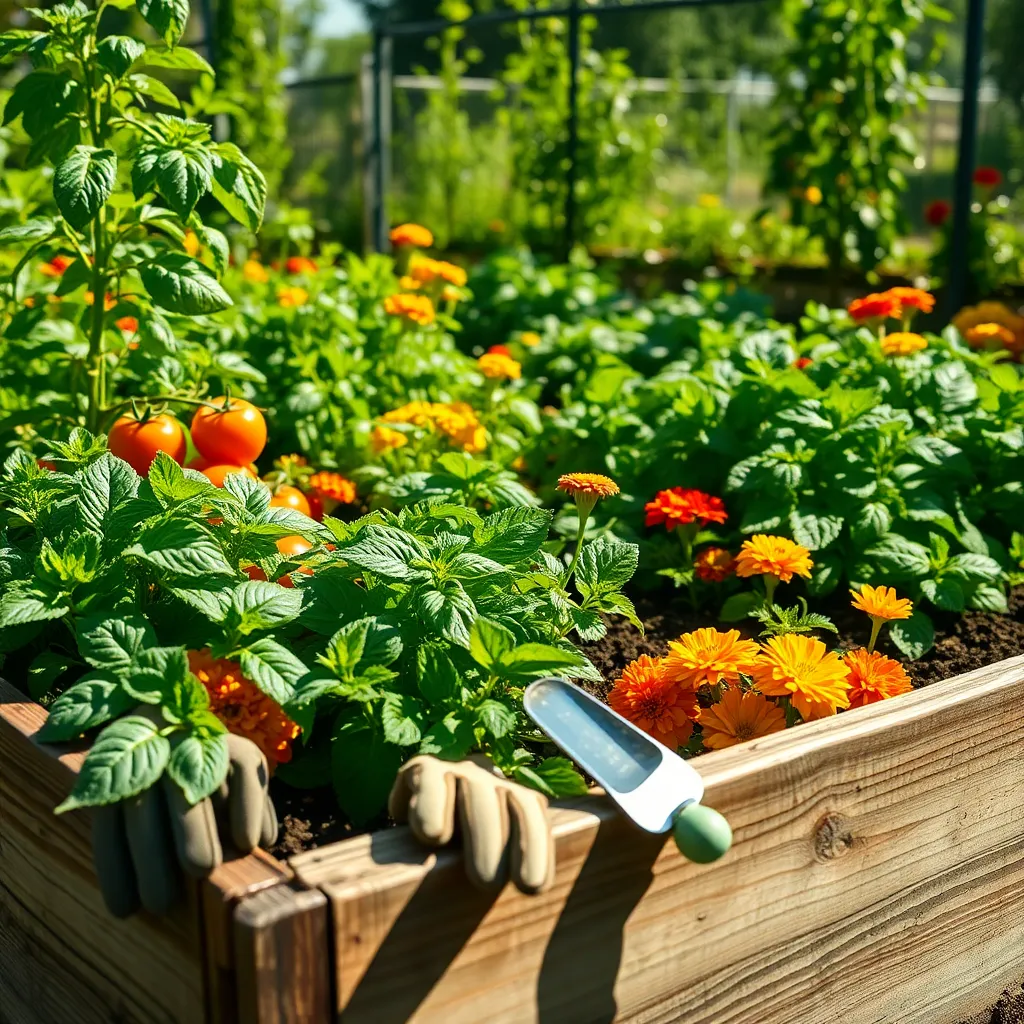
Companion planting is a wonderful way to enhance the growth and health of your garden. By strategically placing certain plants together, you can naturally repel pests, enhance nutrient uptake, and improve yields.
Choosing the right plant combinations is essential for success. For example, planting basil alongside tomatoes can improve the flavor of the tomatoes and deter pests like aphids and hornworms.
Consider the specific needs of each plant when planning your garden layout. Some plants, like carrots and onions, can thrive together as onions help deter carrot flies, creating a mutually beneficial environment.
Advanced gardeners can experiment with dynamic plant groupings for greater benefits. For instance, the “Three Sisters” method—planting corn, beans, and squash together—allows corn to provide a natural trellis for beans, while squash acts as a living mulch, conserving soil moisture.
Install Rain Barrels for Watering
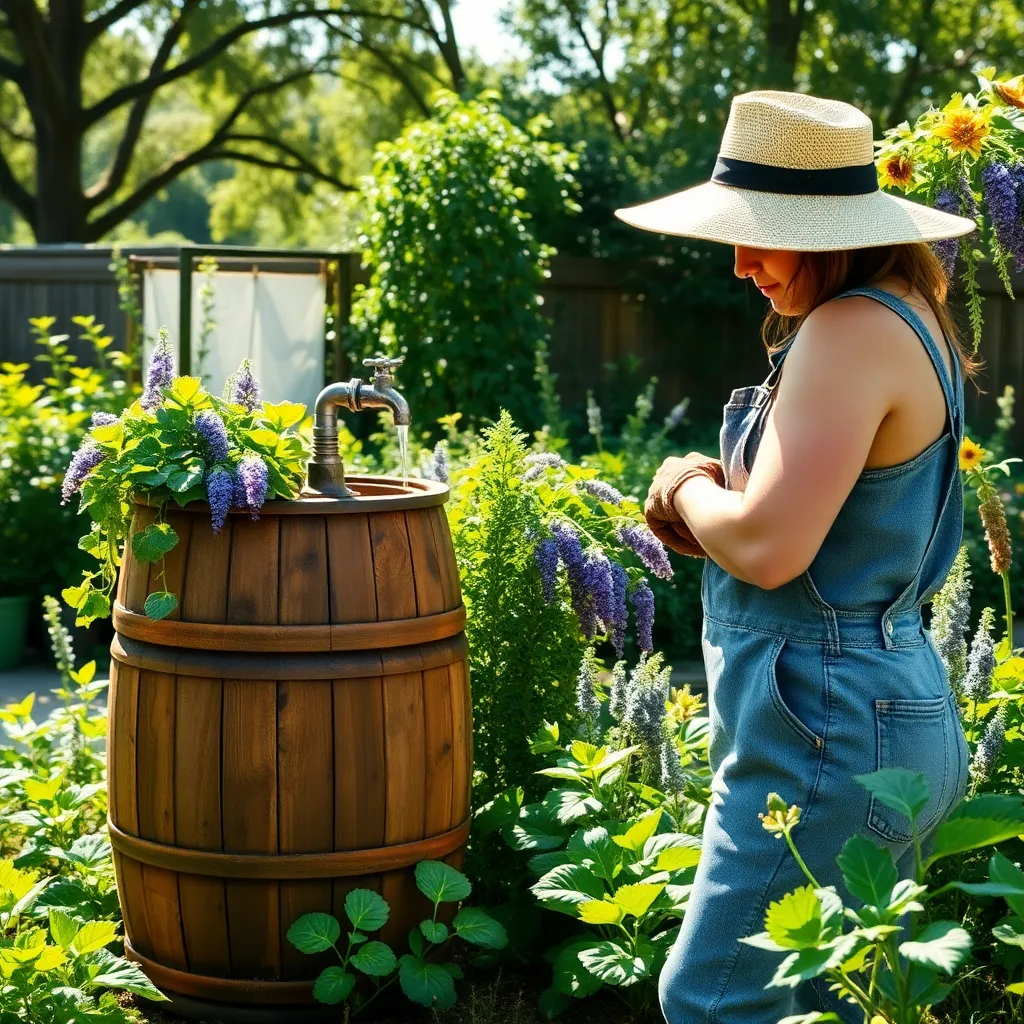
Rain barrels are an excellent way to conserve water and reduce your environmental impact while maintaining a healthy garden. By collecting rainwater, you can ensure that your plants receive fresh, chemical-free hydration, which is particularly beneficial for organic gardening.
To install a rain barrel, first choose a location under a downspout where water naturally flows. Ensure the barrel has a tight-fitting lid to prevent debris and mosquitoes from contaminating the water.
Consider investing in a rain barrel with a spigot for easy access to the water, allowing you to attach a hose or fill a watering can. Elevating the barrel on a stand can also improve water pressure, making it easier to water your plants efficiently.
Regularly check and clean your rain barrel system to keep it free of clogs and ensure optimal performance. Additionally, during dry spells, you can supplement your rainwater supply with greywater from household use, provided it is free of harmful chemicals.
Create Natural Pest Barriers
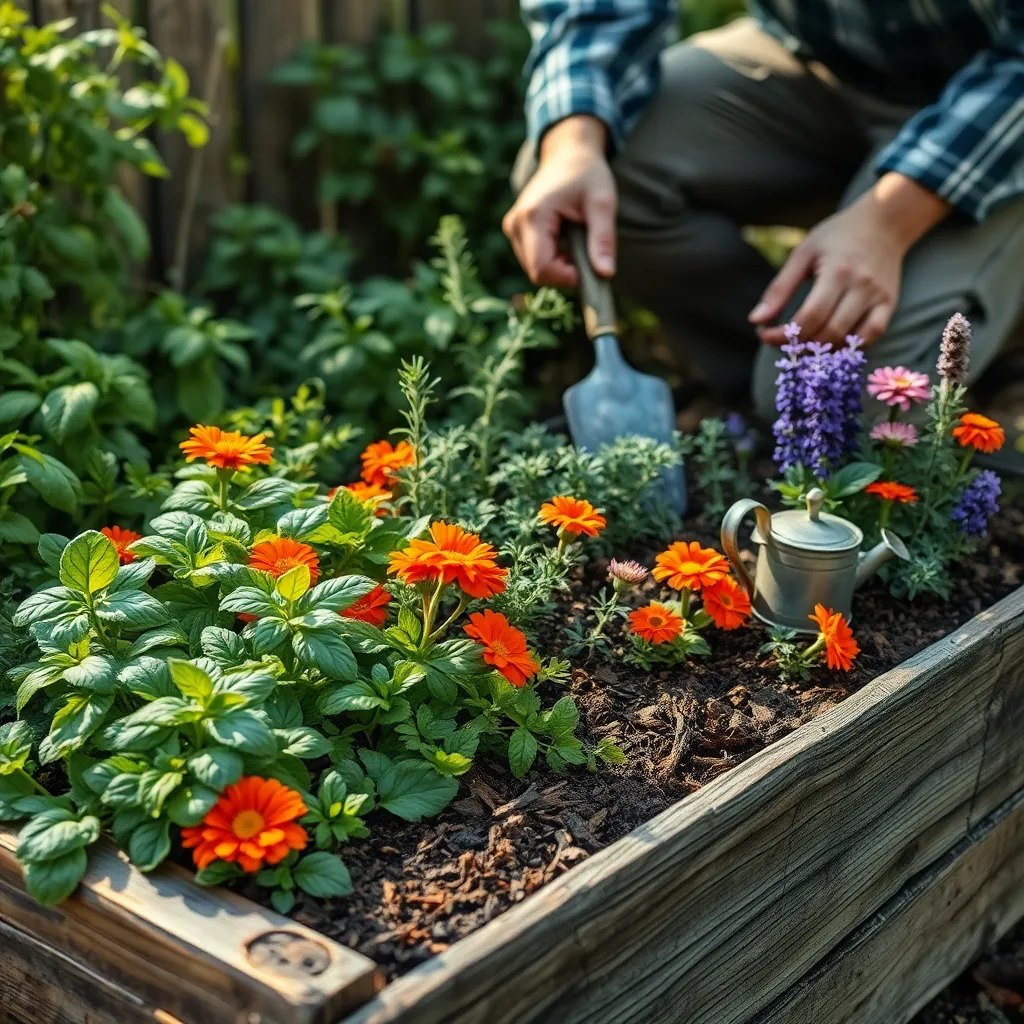
Creating natural pest barriers is an effective way to protect your garden without resorting to chemicals. One of the best methods is using companion planting, where certain plants are grown together to repel pests and promote healthy growth.
For instance, planting marigolds alongside vegetables like tomatoes and peppers can deter nematodes and aphids. These vibrant flowers not only add color to your garden but also release a scent that pests find unpleasant, keeping them at bay.
Another strategy is to use herbs like basil and mint, which can naturally repel insects such as mosquitoes and flies. Plant basil near your tomatoes to enhance their flavor while providing a barrier against unwanted bugs.
Consider installing physical barriers like row covers to shield your plants from larger pests such as birds and rabbits. These lightweight fabrics allow sunlight and water to reach your plants while physically blocking pests from accessing them.
Attract Beneficial Insects with Flowers
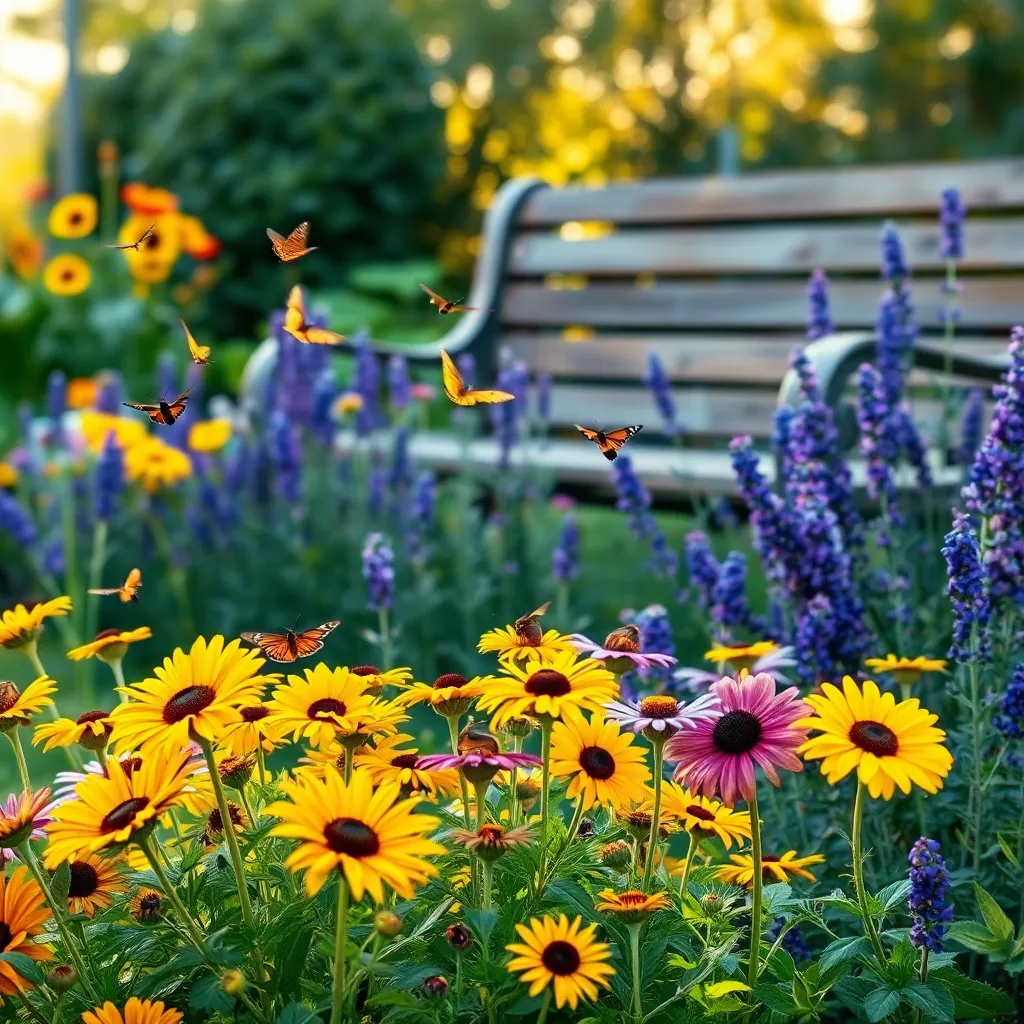
Attracting beneficial insects to your garden is a natural way to control pests and promote healthy plant growth. One of the most effective strategies is to plant a variety of flowers that appeal to these helpful creatures.
Marigolds, sunflowers, and daisies are excellent choices for attracting beneficial insects such as ladybugs and lacewings. These flowers not only provide nectar and pollen but also create a habitat where these insects can thrive and reproduce.
Consider planting herbs like dill, fennel, and cilantro, which are known to attract parasitic wasps and hoverflies. These insects are natural predators of common garden pests, helping to keep your garden healthy without the need for chemical interventions.
For advanced gardeners, incorporating a diverse range of flowering plants can enhance the ecological balance in your garden. Plant in clusters to create a more inviting environment while ensuring that the flowers bloom at different times throughout the growing season, providing a continuous food source.
Use Organic Fertilizers Sparingly
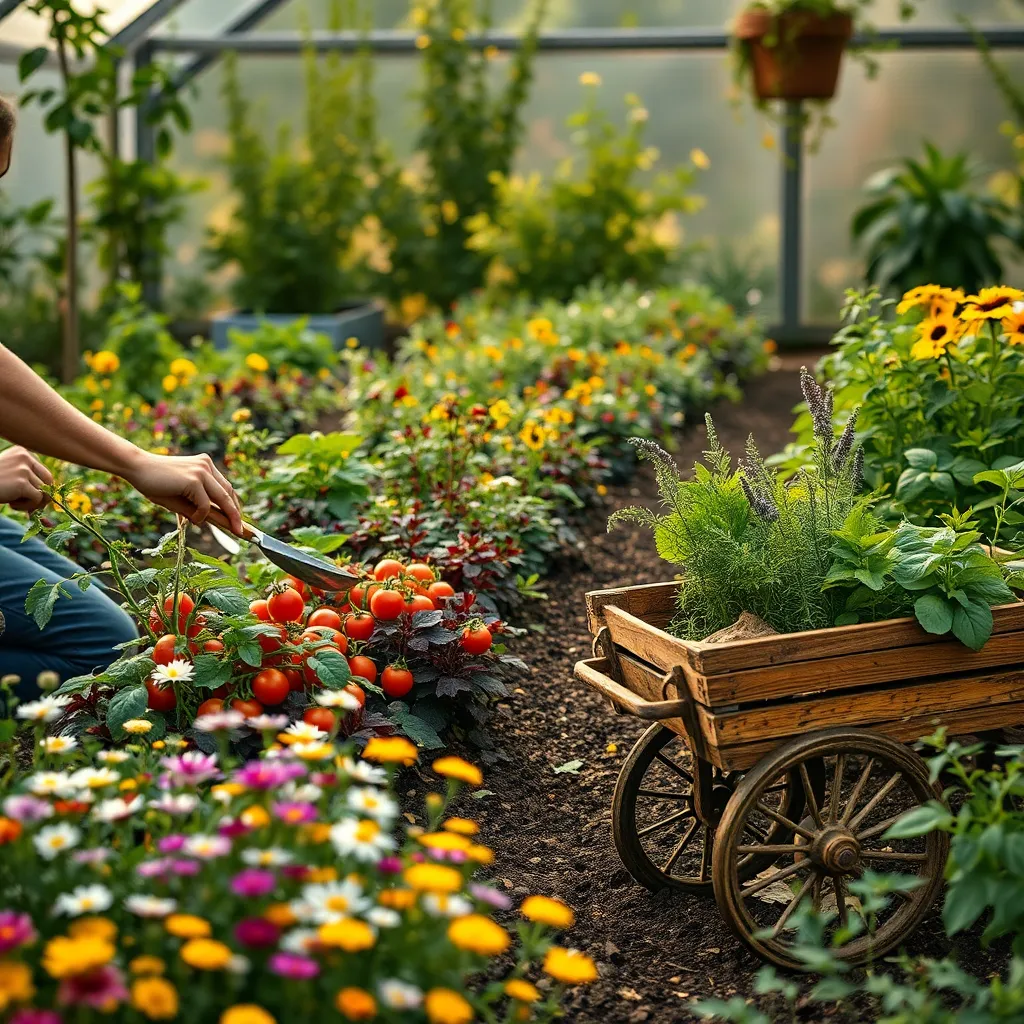
Using organic fertilizers sparingly is crucial for maintaining a healthy garden balance. While these fertilizers are natural, overapplication can lead to nutrient runoff and environmental harm.
When applying organic fertilizers, consider the specific needs of your plants and soil. Conducting a soil test can help determine which nutrients are lacking, allowing you to target deficiencies effectively.
Compost is an excellent organic fertilizer that should be incorporated into your soil once or twice a year. A layer of 1-2 inches is generally sufficient for most plants, providing a slow release of nutrients over time.
For plants with higher nutrient demands, such as tomatoes or peppers, supplementing with specific organic fertilizers like fish emulsion or bone meal can be beneficial. However, make sure to follow the recommended application rates on the product labels to avoid over-fertilizing.
Hand-Pick Pests in Early Morning
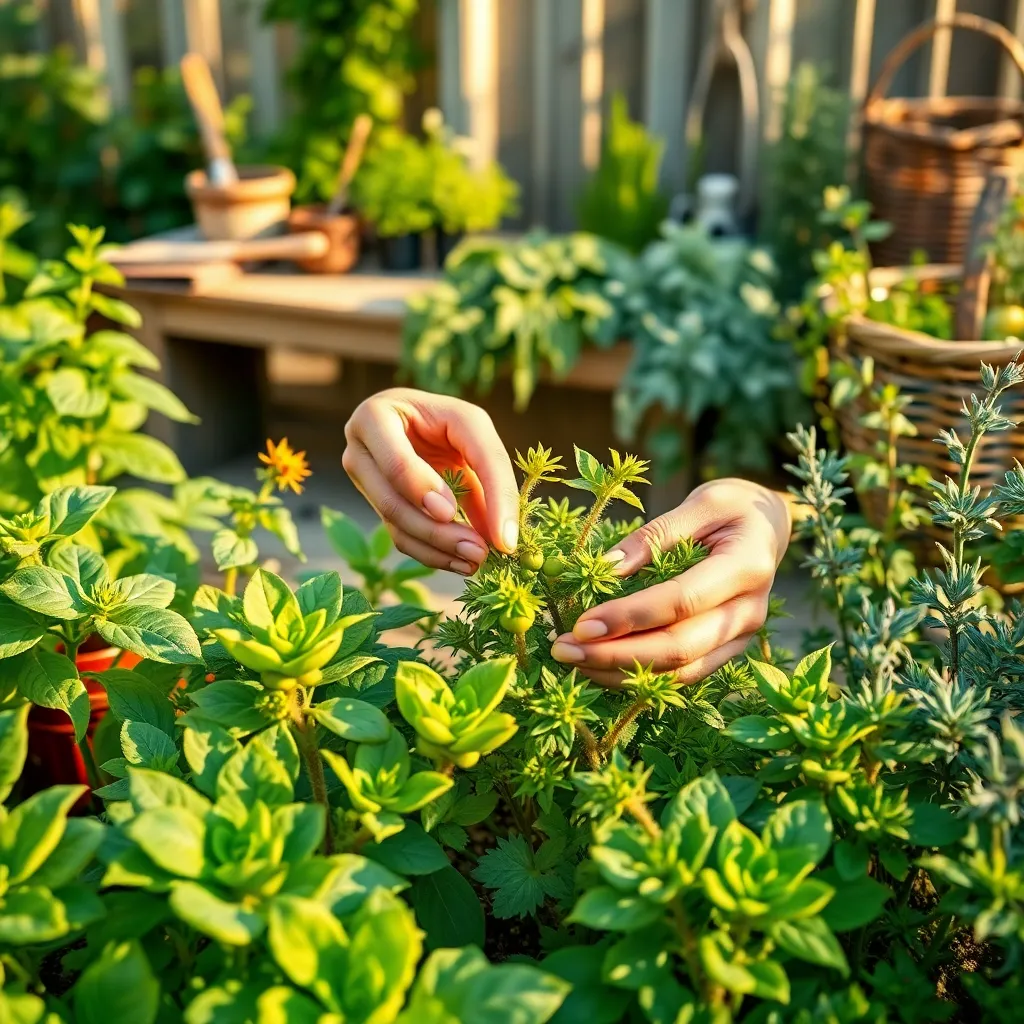
Early morning is an ideal time to hand-pick pests from your garden, as many insects are less active and easier to catch. By using this method regularly, you can significantly reduce the pest population without resorting to chemical pesticides.
Start by inspecting the undersides of leaves, where pests like to hide. Common offenders include caterpillars, slugs, and beetles, which can be manually removed and disposed of in a bucket of soapy water.
Wearing gloves can make the task more comfortable and protect your hands from any irritants. For those who have larger gardens, consider using a headlamp or flashlight for better visibility in the early hours.
For an added layer of control, release beneficial insects such as ladybugs or parasitic wasps into your garden. These natural predators can help manage the pest population without harming your plants.
Remember, consistent monitoring is key to keeping your garden healthy. By integrating hand-picking into your routine, you’ll enjoy a more vibrant and less pest-prone garden throughout the season.
Employ Cover Crops in Off-Season
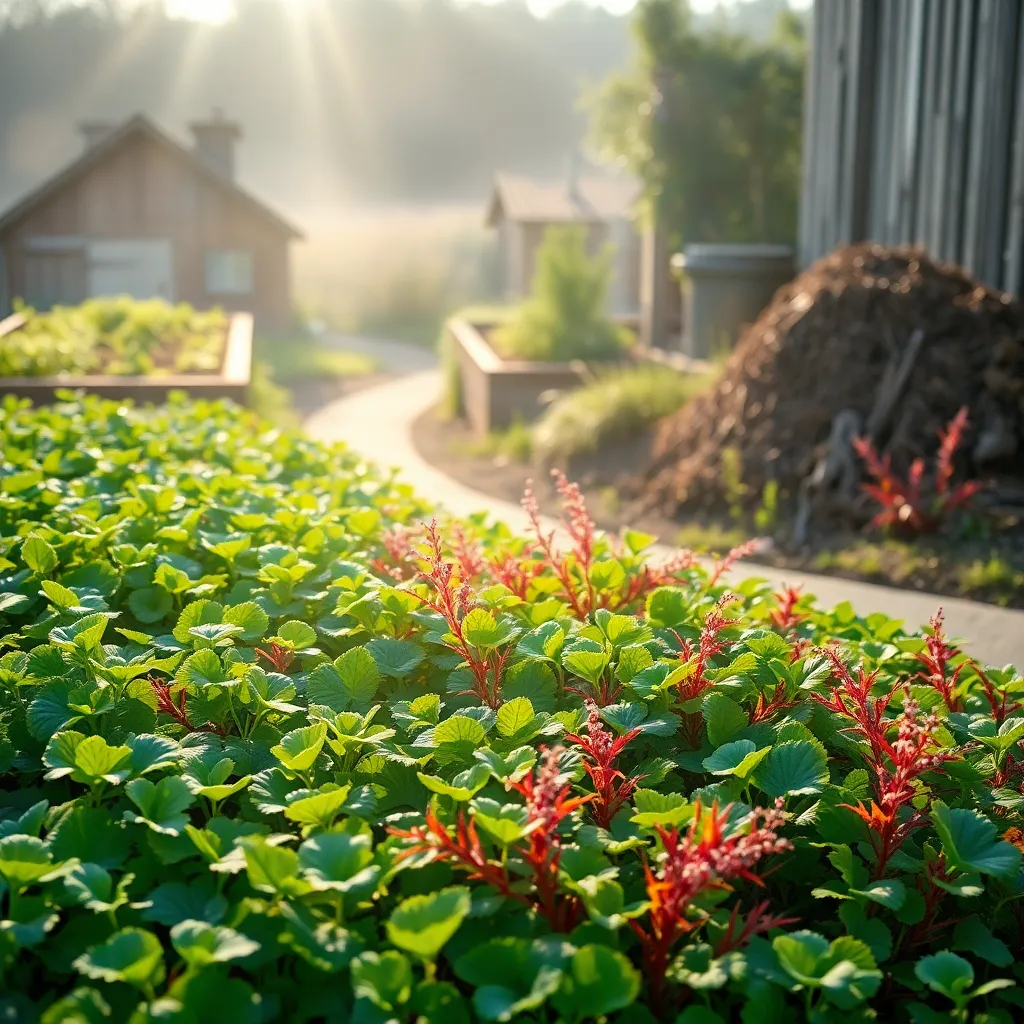
Incorporating cover crops during the off-season is a powerful way to enhance soil health and fertility. These plants, often referred to as “green manure,” help in preventing soil erosion and adding organic matter back into your garden.
For beginners, consider starting with easy-to-grow cover crops like clover or vetch. These plants are not only hardy but also have the added benefit of fixing nitrogen in the soil, which will be crucial for your main crops in the growing season.
Advanced gardeners might explore a mix of cover crops, such as rye and clover, to address specific soil needs. Rye has deep roots that can improve soil structure, while clover can increase soil nitrogen levels, creating a tailored approach to soil management.
To maximize benefits, plant your cover crops in late summer or early fall after your main crops have been harvested. Ensure they receive enough water to establish, but once they’re growing, they can often thrive with minimal intervention, making them a low-maintenance addition to your gardening routine.
Implement Crop Diversity Strategies
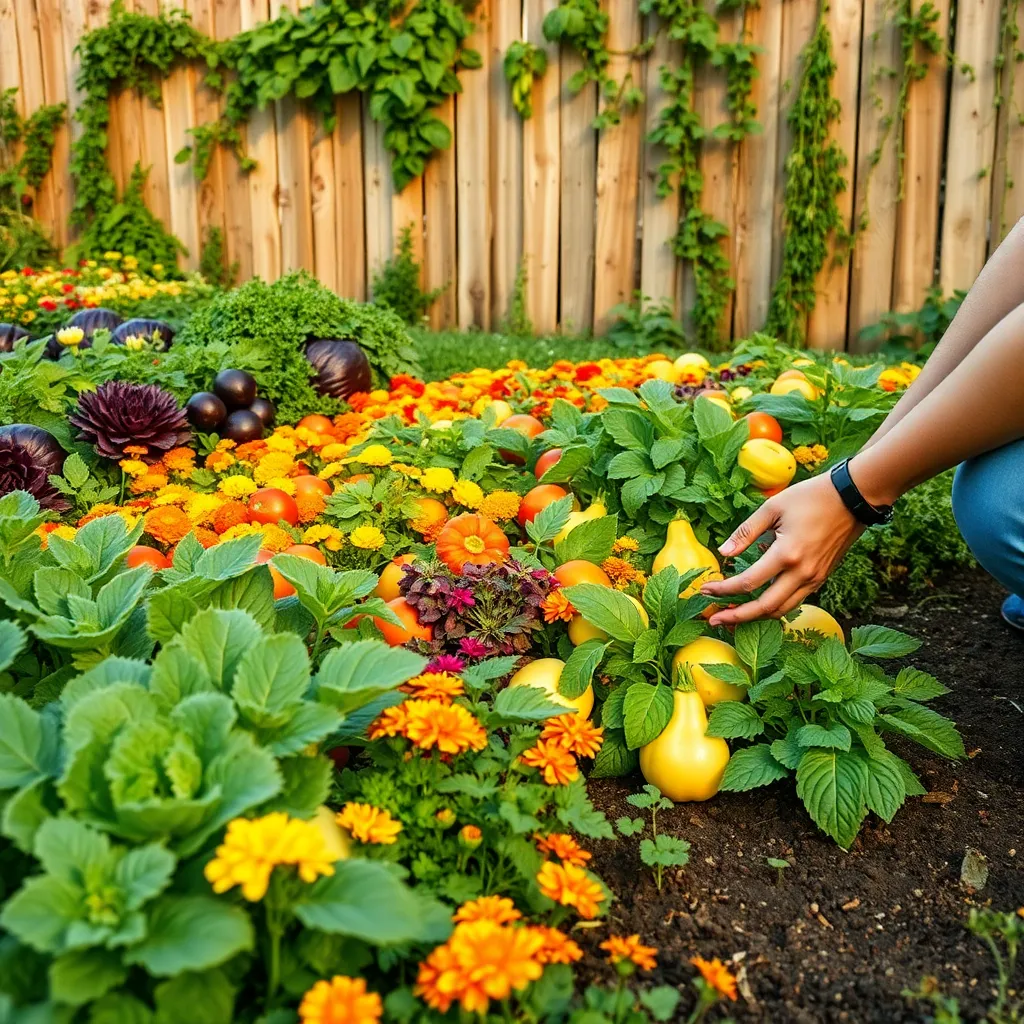
Implementing crop diversity in your garden is a powerful strategy to enhance plant health and yield. By growing a variety of plants together, you can create a balanced ecosystem that naturally deters pests and diseases.
Begin by selecting diverse crops that are suited to your local climate and soil conditions. Incorporate a mix of root vegetables, leafy greens, and flowering plants to ensure a broad range of nutrients is utilized and replenished in the soil.
For beginners, try starting with easy combinations like tomatoes, basil, and marigolds, which thrive together and support each other’s growth. These plants not only complement each other in terms of nutrient needs but also offer pest-repelling benefits.
Experienced gardeners might explore planting legumes alongside heavy feeders like corn, as legumes fix nitrogen into the soil, enriching it for the surrounding plants. Additionally, consider rotating your crops annually to prevent soil depletion and reduce pest buildup.
Test Soil pH Annually
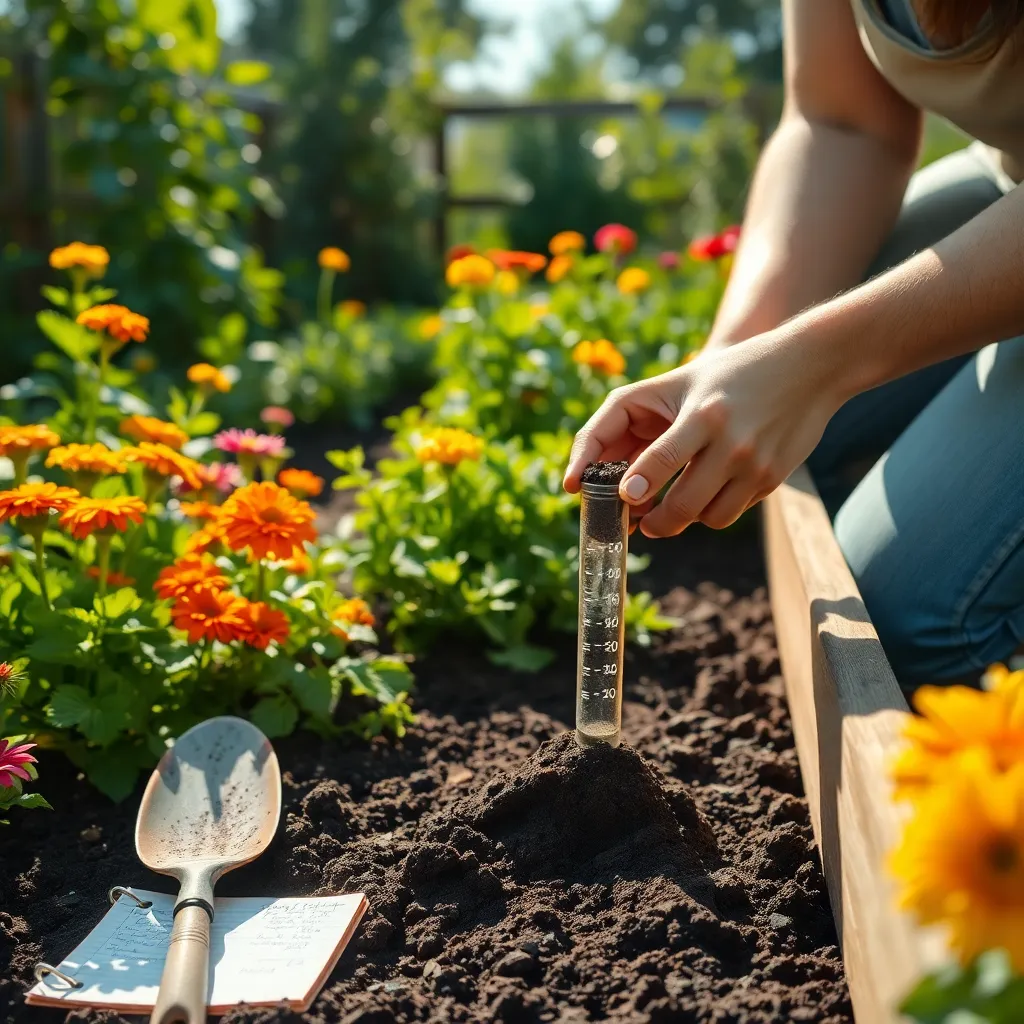
Knowing your soil’s pH is crucial for organic gardening success. Testing your soil pH annually helps you understand the nutrient availability and overall health of your garden soil.
To test your soil pH, use a reliable test kit from a garden center or send a sample to a local extension service. Both options will provide you with detailed results, informing you whether your soil is acidic, neutral, or alkaline.
Most vegetables prefer a slightly acidic to neutral soil pH of 6.0 to 7.0. If your test results show a different pH range, you can amend your soil accordingly with organic materials like lime to raise pH or sulfur to lower it.
Maintaining the right soil pH ensures your plants can absorb essential nutrients effectively. This is particularly important for sensitive plants such as blueberries, which thrive in more acidic conditions (4.5 to 5.5 pH).
For experienced gardeners, consider testing different garden areas separately, as pH levels can vary across your yard. This detailed approach allows you to tailor soil amendments precisely, maximizing plant health and yield.
Maintain Healthy Garden Hygiene
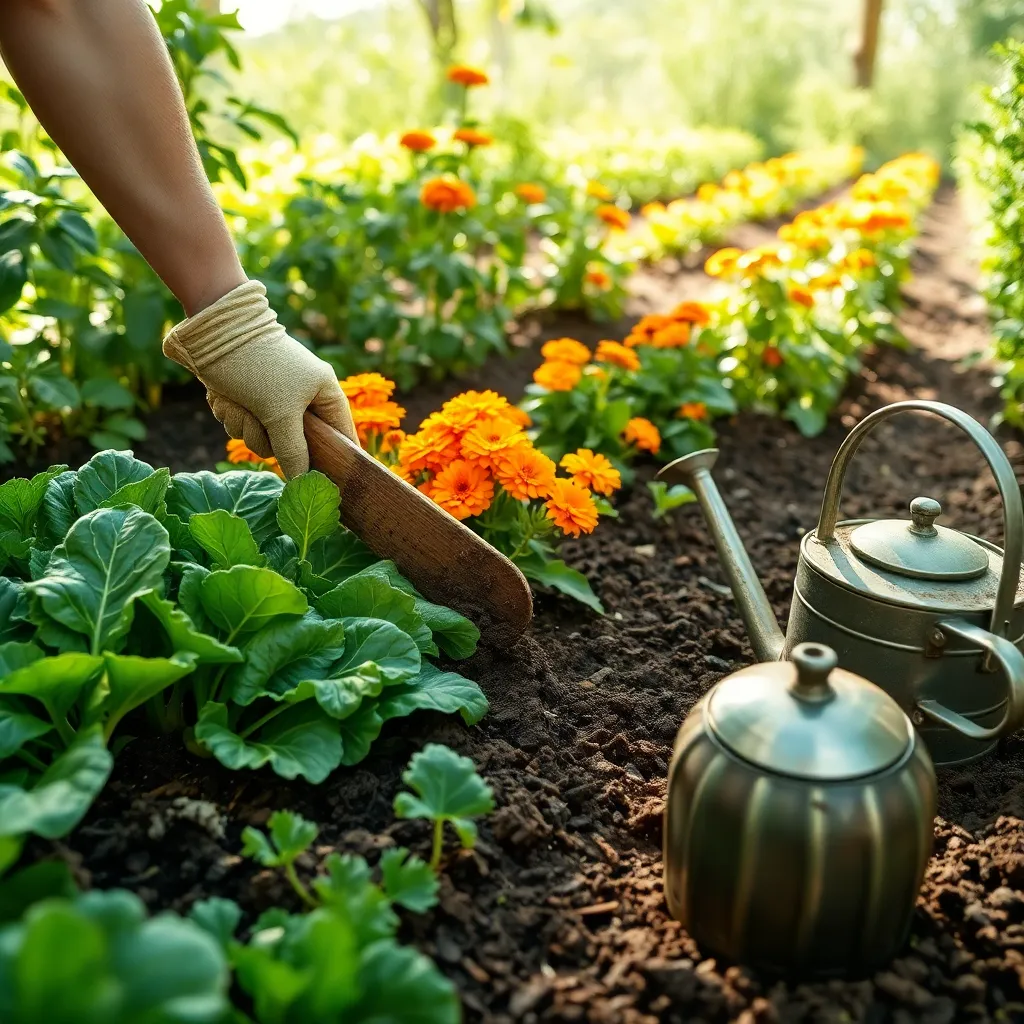
Maintaining healthy garden hygiene is crucial for preventing diseases and encouraging plant growth. Start by regularly cleaning your gardening tools, as dirty tools can spread pathogens and pests from one plant to another. Use a solution of one part bleach to nine parts water, or simply soap and water, to sanitize tools after each use.
Another important aspect of garden hygiene is keeping your garden free from debris. Dead leaves and plant material can harbor pests and diseases, so remove them promptly. Additionally, practice crop rotation to prevent soil-borne diseases from building up in your garden beds.
Proper watering techniques also play a significant role in maintaining garden hygiene. Water plants early in the morning to minimize evaporation and reduce the risk of fungal diseases that thrive in wet conditions. Focus on watering the base of the plants rather than the foliage, as wet leaves can be more susceptible to disease.
Finally, consider applying a layer of organic mulch to your garden beds. Mulch helps retain moisture, suppress weeds, and prevent soil from splashing onto plants, which can spread disease. Choose mulches like straw, wood chips, or shredded leaves for the best results.
Conclusion: Growing Success with These Plants
In exploring the ’14 Organic Gardening Tips’ for nurturing relationships, we’ve uncovered essential concepts that, like a flourishing garden, require patience, care, and attention. From understanding the importance of open communication and active listening to fostering trust and setting healthy boundaries, these tips provide the foundation for a thriving partnership. Emphasizing shared goals, embracing vulnerability, and maintaining a sense of humor are vital to keeping the relationship vibrant and resilient. By practicing gratitude, supporting each other’s growth, and nurturing intimacy, you can cultivate a bond that withstands life’s seasons.
Now, take a moment to reflect on one area you can enhance today—perhaps initiate a heartfelt conversation or plan a small, meaningful gesture. As you embark on this journey of growth and connection, let this article be your trusted guide. Bookmark it now to revisit these insights whenever you need a reminder or boost.
Remember, the seeds of a successful relationship are planted with intention and nurtured with love. With dedication and these organic tips, your relationship can blossom beautifully over time. Here’s to a future filled with love, understanding, and enduring happiness.


